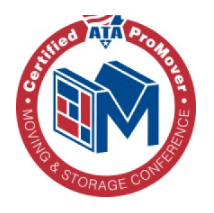USPS Mail Forwarding Time: How Long Until My Mail Arrives?

Moving to a new address is an exciting endeavor, but it also comes with numerous tasks to manage and details to coordinate. One of the most crucial aspects of ensuring a smooth transition is mail forwarding, which allows your mail to be redirected from your old address to your new one.
Understanding the mail forwarding process and timeline is essential for maintaining uninterrupted communication and avoiding missed bills, letters, or packages.
Typically, it takes 7 to 10 business days for forwarded mail to arrive at your new address, especially for long-distance moves, but several factors can affect the start time and duration of mail forwarding.
The United States Postal Service (USPS) offers various mail forwarding options, including temporary mail forwarding, permanent change of address (COA), premium forwarding service, and hold mail service. Each option has its own unique features and benefits, catering to different moving situations and needs.
Setting up mail forwarding involves a few simple steps, and it’s essential to understand the types of mail that can be forwarded. Knowing how to extend or cancel your mail forwarding service can assist you in managing your mail more efficiently during and after your move.
With a clear understanding of the mail forwarding process, you’ll be well-equipped to make informed decisions and ensure a seamless transition for your mail. This knowledge will give you peace of mind as you settle into your new home, allowing you to focus on the excitement of your new beginning.
What Is USPS Mail Forwarding and How Does It Work?
Mail forwarding is a handy service offered by the United States Postal Service (USPS) that automatically reroutes your mail from an old address to a new one. Whether you’re moving to a new home or temporarily changing your address, this service ensures you continue receiving your mail without any disruptions.
Definition Of Mail Forwarding
When you set up mail forwarding with the USPS, they intercept mail sent to your old address and redirect it to the new address you provide. This process effectively forwards mail addressed to your previous location to your current one, making sure you don’t miss a thing.
Why Mail Forwarding Is Important When Moving
Setting up mail forwarding is essential when moving to a new home to ensure you don’t miss important letters, bills, or packages. Updating your address with every individual sender can be a time-consuming task that may lead to missed notifications if not done thoroughly.
By utilizing the mail forwarding service, you can have peace of mind knowing that your mail will be automatically redirected to your new address without the need to contact each sender individually.
This service is especially helpful during the transition period when you are settling into your new home and gradually updating your address with various contacts and organizations.
How to Forward Mail to Your New Address
Moving to a new address requires careful planning to ensure your mail follows you seamlessly. The USPS mail forwarding process involves several steps that must be completed in the correct order to avoid any interruption in your mail delivery. Understanding these steps and following them precisely will help ensure your mail arrives at your new location without delays.
When forwarding mail to a new address, you’ll need to submit your request at least 7-10 business days before your move date. This advance notice gives the USPS sufficient time to process your request and update their systems. You can submit your forward request for up to 30 days in advance of your move date, which is recommended for ensuring a smooth transition.
The process begins with gathering all necessary documentation and information about both your old and new addresses. This includes having proper identification, proof of residence at your old address, and accurate details about your new location. Being thorough in this preparation phase will help prevent any delays or complications in the forwarding process.
Required Documentation for New Address Forwarding
Before submitting your mail forwarding request for your new address, you’ll need several key pieces of information and documentation. This includes a valid government-issued photo ID, your current address details, and your new address information. If you’re forwarding mail for a family or business, you’ll need additional documentation showing your authority to make this request.
The USPS requires specific formatting for both old and new addresses, including proper street suffixes, apartment numbers, and ZIP codes. Taking time to verify these details against USPS standards can prevent processing delays and ensure your mail reaches its intended destination.
Verifying Your New Address for Mail Forwarding
Once you’ve submitted your forwarding request, the USPS will send a Move Validation Letter to both your old and new addresses. This security measure helps prevent fraudulent forwarding requests and confirms the accuracy of your new address. You should receive these letters within 5 business days of submitting your request.
If any information needs correction, you can update your forwarding request online or visit your local post office. It’s crucial to verify all details promptly to avoid any disruption in your mail service.
USPS Mail Forwarding Options
The United States Postal Service (USPS) understands that life can be unpredictable, and they’re committed to making mail management as smooth as possible for you.
They offer a variety of mail forwarding options designed to meet your specific needs, whether you’re moving temporarily, relocating permanently, or simply need to hold your mail for a short time.
Temporary Mail Forwarding
Temporary mail forwarding is the perfect solution when you’re going on an extended vacation or relocating temporarily for work or study. This service will redirect your mail to a new address for a limited period, ensuring you stay connected no matter where life takes you.
Duration of Temporary Mail Forwarding
The USPS provides flexible options for temporary mail forwarding, with a minimum duration of 15 days and a maximum of 1 year. You have the freedom to choose the specific start and end dates that work best for your situation.
When to Use Temporary Mail Forwarding
Temporary mail forwarding can be a lifesaver in various scenarios:
- Extended vacations or travel adventures
- Short-term relocation for work or educational opportunities
- Renovations or repairs at your primary residence
Permanent Change of Address (COA)
When you’re making a long-term move, a permanent change of address (COA) is the way to go. This mail forwarding service ensures that your mail is redirected to your new home indefinitely, allowing for a seamless transition.
Duration of Permanent COA
A permanent COA remains active for 12 months for First-Class Mail and 60 days for Priority Mail, Media Mail, and Bound Printed Matter. After this period, any mail sent to your old address will be returned to the sender with your updated address, reminding them to update their records.
When to Use Permanent COA
A permanent COA is the ideal choice when you’re:
- Moving to a new home for an extended period
- Relocating to a different city or state for a fresh start
- Changing your primary residence to better suit your needs
Premium Forwarding Service
For those who need a more personalized mail forwarding experience, the Premium Forwarding Service (PFS) is a game-changer. This option allows you to receive all your mail at a temporary address on a weekly basis, so you never miss any important correspondence.
How Premium Forwarding Service Works
With PFS, the USPS takes care of everything for you. They hold your mail at the local post office and ship it to your temporary address once a week via Priority Mail, ensuring the delivery of all your mail, including magazines and catalogs, no matter where you are.
Cost and Duration of Premium Forwarding Service
While PFS does come with an enrollment fee and a weekly shipping charge, the convenience and peace of mind it provides are well worth the investment.
You can set up the service for a minimum of 2 weeks and a maximum of 1 year, depending on your needs. To learn more about top mail forwarding services, visit the USPS website or stop by your local post office.
Hold Mail Service
Sometimes, you just need a short break from your daily mail. That’s where the Hold Mail Service comes in handy, allowing the USPS to hold your mail at the local post office for a brief period while you’re away from home.
How Hold Mail Service Works
Setting up Hold Mail Service is a breeze. Just let the USPS know, and they’ll hold your mail at the local post office until you return. When you’re back, you can either pick up your mail in person or have it delivered to your address, whichever is more convenient for you.
Duration of Hold Mail Service
The Hold Mail Service is available for a minimum of 3 days and a maximum of 30 days. If you need mail holding for a longer period, consider opting for Temporary Mail Forwarding or Premium Forwarding Service instead.
How To Set Up Mail Forwarding With USPS
Setting up mail forwarding with the United States Postal Service (USPS) is a straightforward process that can be completed online or in person at your local post office.
By following a few simple steps, you can ensure your mail is redirected to your new address without any disruptions, giving you peace of mind during your move.
Online Mail Forwarding Application
The most convenient way to set up mail forwarding is through the USPS website. To begin the online application, visit the official USPS Change of Address page and follow these steps:
- Select the type of move (permanent or temporary) and provide your move date.
- Enter your old and new addresses, including apartment numbers if applicable.
- Provide a valid email address and phone number for contact purposes.
- Pay the identity verification fee using a credit or debit card.
- Confirm your change of address request and print the confirmation page for your records.
The online process is user-friendly and designed to guide you through each step seamlessly.
In-Person Mail Forwarding Application
If you prefer a more personal touch, setting up mail forwarding in person at your local post office is an option.
Simply request a PS Form 3575 (Change of Address Order) and fill out the form with your old and new addresses, the type of move (permanent or temporary), and the start and end dates for mail forwarding.
A friendly USPS representative will be happy to assist you in processing your request.
Required Information For Mail Forwarding Application
Whether you apply online or in person, you will need to provide some essential information to set up mail forwarding. This includes:
- Your full name and the names of any family members moving with you
- Your old address, including apartment number if applicable
- Your new address, including apartment number if applicable
- The type of move (permanent or temporary)
- The start and end dates for mail forwarding (if applicable)
- A valid email address and phone number for contact purposes
Having this information ready will make the application process smoother and more efficient.
Confirming Your Mail Forwarding Request
Once you’ve submitted your mail forwarding application, the USPS will process your request within 3-5 business days.
You can expect to receive a confirmation letter at your new address, validating that your mail forwarding service has been set up successfully. This confirmation provides added assurance that your mail will be redirected to your new address without any delays or complications.
If you are forwarding mail to another state, it is essential to update your address with all relevant parties, such as your employer, banks, and subscription services. Taking this extra step will ensure a seamless transition and minimize any potential disruptions in your mail delivery.
USPS Mail Forwarding Timeline: When Does It Start?
Moving to a new address can be an exciting and rewarding experience, and understanding the mail forwarding timeline can help facilitate a seamless transition. Let’s explore when to submit your request, how long it takes for the service to begin, and the typical timeframe for your forwarded mail to arrive at your new address.
When To Submit Your Mail Forwarding Request
To minimize the risk of missing important mail, it’s best to submit your mail forwarding request at least 7-10 days before your planned move date. This allows the USPS sufficient time to process your request, ensuring your mail forwarding service is active by the time you move.
How Long It Takes For Mail Forwarding To Begin
Once you’ve submitted your mail forwarding request, the USPS typically takes 3-5 business days to process and activate the service. During this period, your mail will continue to be delivered to your old address.
Factors That Can Affect Mail Forwarding Start Time
Several factors can influence the start time of your mail forwarding service:
- The accuracy and completeness of your change of address form
- The volume of mail forwarding requests being processed by the USPS
- Any delays or issues with payment processing (for online applications)
To minimize potential delays, double-check that you provide accurate and complete information when submitting your request. This will help ensure a smooth and timely activation of your mail forwarding service.
How Long It Takes For Forwarded Mail To Arrive
Once your mail forwarding service is active, you may wonder about the timeframe for your forwarded mail to reach your new address. Generally, you can expect your forwarded mail to arrive within 7-10 business days after the service begins, although this can vary depending on several factors.
Typical Timeframe For Forwarded Mail Arrival
Under normal circumstances, your forwarded mail should arrive at your new address within 7-10 business days. This timeframe accounts for the additional processing time required to redirect your mail from your old address to your new one.
Potential Delays In Forwarded Mail Arrival
Although the USPS strives to deliver forwarded mail in a timely manner, certain factors can lead to delays:
- Increased mail volume during peak seasons (e.g., holidays)
- Inclement weather conditions affecting mail transportation
- Incorrect or incomplete address information on the mail pieces
If you experience significant delays in receiving your forwarded mail, don’t hesitate to contact your local post office or the USPS customer service for assistance. They will be happy to help you resolve any issues and ensure your mail reaches you as quickly as possible.
By familiarizing yourself with the mail forwarding timeline and submitting your request well in advance of your move date, you can minimize the risk of missing important mail and ensure a smooth transition to your new address.
The USPS is dedicated to making your move as seamless as possible, and their mail forwarding services are designed to provide you with peace of mind during this exciting time.
Types Of Mail That Can Be Forwarded
Understanding which types of mail the USPS can forward to your new address is crucial when setting up mail forwarding. Rest assured, most mail types are eligible for forwarding, ensuring you continue receiving your important correspondence and packages without interruption.
First-Class Mail
The USPS mail forwarding service can forward First-Class Mail, including letters, bills, postcards, and small packages up to 13 ounces. This covers the majority of your personal and business correspondence, ensuring your essential mail reaches your new address seamlessly.
Magazines And Newspapers
Periodicals like magazines and newspapers can also be forwarded to your new address. Keep in mind that the forwarding time frame for periodicals may be slightly longer than for First-Class Mail, with the first issue typically arriving at your new address within 2-3 weeks.
Package Services
Most packages sent through USPS Package Services, such as Priority Mail, Priority Mail Express, and Media Mail, are covered by the USPS mail forwarding service. Whether you’re expecting personal or business-related packages, you can have peace of mind knowing they’ll be redirected to your new location.
Mail That Cannot Be Forwarded
While the USPS forwards most mail types, there are a few exceptions that cannot be forwarded through the USPS mail forwarding service:
- Mail addressed to “Occupant,” “Resident,” or “Current Resident”
- Mail sent to a specific business or organization without an individual’s name
- Mail sent to a P.O. Box (unless you have filed a change of address for your P.O. Box)
- Packages sent through non-USPS shipping services (e.g., FedEx, UPS)
If you receive mail that cannot be forwarded, the sender will usually be notified of your new address, allowing them to update their records and resend the mail directly to your current location.
Familiarizing yourself with the types of mail that can be forwarded ensures a smooth transition and uninterrupted delivery of your important correspondence and packages. Your local post office is always ready to provide further assistance and guidance if you have any specific questions or concerns about mail forwarding.
Extending Or Canceling Mail Forwarding
As your mail forwarding needs change, you may find it necessary to adjust the service to better suit your timeline and preferences. Don’t worry, the USPS offers flexible options that allow you to easily extend or cancel your mail forwarding service.
How To Extend Mail Forwarding Service
Extending your mail forwarding service is a breeze with the USPS website. Simply log into your account, access your mail forwarding settings, and select the option to extend the service for your desired duration.
Maximum Duration Of Mail Forwarding Extension
The maximum duration for mail forwarding extensions depends on your initial forwarding service type:
- Temporary mail forwarding: You can extend this service up to a total of 12 months from your original start date.
- Permanent change of address: No extension is required; this service remains in effect until you submit a new change of address request or cancel the service.
- Premium Forwarding Service: You can extend this service in 1-week increments up to a maximum of 1 year from your initial start date.
Keep in mind that extending your mail forwarding service may incur additional fees, which will be clearly disclosed during the extension process.
How To Cancel Mail Forwarding Service
If you no longer require mail forwarding or your desired forwarding period has ended, canceling the service is just as simple. Visit the USPS website, log into your account, access your mail forwarding settings, and choose the option to cancel the service.
Alternatively, you can request cancellation in person at your local post office. When canceling your mail forwarding service, it’s essential to update your address with relevant contacts, such as banks, employers, and subscriptions, to ensure that your mail is sent directly to your current address, preventing any missed deliveries or delays.
By understanding the processes for extending or canceling mail forwarding, you can effectively manage your mail during and after your move. Staying on top of your forwarding timeline and making necessary adjustments will ensure a smooth transition and uninterrupted mail delivery.
Notifying Others Of Your Address Change
Setting up mail forwarding is a crucial step in managing your mail during a move, but it’s equally important to notify key parties of your address change directly. This ensures you continue receiving important documents, updates, and services without interruption.
Government Agencies (IRS, DMV, Social Security)
Notifying government agencies of your address change is essential to maintain accurate records and avoid missing critical communications.
Update your address with the Internal Revenue Service (IRS) to ensure you receive tax-related documents and refunds, and inform your state’s Department of Motor Vehicles (DMV) to update your driver’s license and vehicle registration.
Don’t forget to contact the Social Security Administration (SSA) to update your address for benefits and correspondence.
Financial Institutions (Banks, Credit Card Companies)
Inform your banks, credit unions, and credit card companies of your new address to ensure you receive statements, cards, and other financial documents. Many financial institutions allow you to update your address online through secure portals, while others may require a phone call or written notification.
Remember to update your address for any investment accounts, retirement plans, or insurance policies as well. This will help you stay on top of your financial matters during the transition.
Employers And Schools
Notify your current employer of your address change to maintain accurate records for payroll, benefits, and tax purposes. If you’re transitioning to a new job, provide your updated address to your new employer as well.
For students, informing your school or university of your new address is crucial to receive important academic and administrative communications. This will help ensure a smooth educational experience during your move.
Subscription Services
Update your address with any subscription services you use, such as magazines, newspapers, streaming platforms, or monthly box deliveries. Many subscription services allow you to manage your account and update your address online, ensuring uninterrupted delivery of your subscriptions to your new residence.
Taking the time to notify these important parties of your address change can minimize the risk of missing crucial information, payments, or services. Keep a checklist of the organizations you need to contact and update your address with them as soon as possible to ensure a smooth transition during your move.
Frequently Asked Questions
- How long does USPS forward mail?
USPS generally forwards mail for 12 months for First-Class Mail, periodicals, and packages. Keep in mind that the exact duration may vary based on the specific mail forwarding service you select, such as temporary or permanent forwarding options.
- Can I forward mail internationally?
Absolutely! USPS provides international mail forwarding services to make sure you receive your mail no matter where you move.
Simply submit a change of address form with your new international address to set it up, but remember that international mail forwarding may come with additional fees and longer transit times compared to domestic forwarding.
- What happens if I don’t submit a USPS mail forwarding request?
If you don’t submit a mail forwarding request when you move, your mail will continue to be delivered to your old address. The new residents at that address might mark your mail as “Return to Sender” or even throw it away, which could lead to you missing important documents, bills, or other correspondence.
- Are there risks to forwarding my mail?
While mail forwarding is usually secure, there are a few potential risks to keep in mind. If you’re forwarding your mail to a temporary address or a location where multiple people can access your mailbox, there’s a possibility that your mail could be accidentally or intentionally opened or misplaced.
- Can I forward mail for someone else?
Forwarding mail for another person is only allowed if you have the legal authority to do so, such as through a power of attorney or guardianship. In most situations, the person who is moving must submit their own mail forwarding request.
If you need to forward mail for someone who has passed away or is incapacitated, reach out to your local post office for guidance on the necessary documentation and procedures. They’ll be happy to guide you through this process during a difficult time.
- How long does it take for a change of address to take effect?
A USPS change of address typically takes 7-10 business days to take effect after submission. During this processing period, the USPS updates their systems and begins redirecting mail to your new address, though some mail may still be delivered to your old address during the transition period.
- Does forwarded mail go to the old address first?
No, once mail forwarding is active, mail is redirected at the sorting facility before reaching your old address. However, during the first few days of service activation, some mail may still be delivered to your old address as the system updates across all postal facilities.
- How long does it take for mail forwarding to start working?
Mail forwarding typically begins within 3-5 business days after your requested start date, provided you submitted your request at least 7-10 days in advance. Premium Forwarding Service starts immediately on your selected date if you’ve completed the setup process beforehand.
Conclusion
Beginning a new chapter in a different home can be both exciting and challenging. Fortunately, the United States Postal Service (USPS) provides mail forwarding options to ease your transition and ensure your mail reaches you at your new address.
By learning about the available forwarding services, expected timelines, and the necessary steps to set up mail forwarding, you can approach the process with confidence. Typically, you can expect your forwarded mail to start arriving at your new residence within 7 to 10 business days after submitting your request.
The duration of the forwarding service depends on the type you select, with some options lasting up to 12 months. To ensure a seamless transition, it’s advisable to submit your mail forwarding request to USPS at least a week before your move date.
Remember to inform important contacts, such as government agencies, financial institutions, employers, and subscription services, about your new address. By leveraging USPS mail forwarding services and adhering to these guidelines, you can minimize the risk of missed communications or delays during your move.
A little foresight and preparation can significantly contribute to a successful transition to your new home. With USPS mail forwarding by your side, you can enjoy a stress-free move while staying connected to your mail throughout the process.
Related Articles
Where to Move from Texas: Top 10 States for Ex-Texans in 2025

Where to Move from Texas: Top 10 States for Ex-Texans in 2025 Record numbers of Texans are exploring life beyond state lines, driven by soaring housing costs, evolving career landscapes, and the search for new lifestyle opportunities. The decision to leave Texas stirs intense emotions – after all, the Lone Star State‘s unique culture and […]
Read MoreHow to Move a House from One Location to Another: Planning to Completion

Relocating an entire house might seem like something out of a movie, but this remarkable feat of engineering happens more often than you’d think. From preserving historic mansions to saving beloved family homes from coastal erosion, house moving represents the intersection of cutting-edge engineering and practical problem-solving. With project costs typically ranging from $18,000 to […]
Read More




